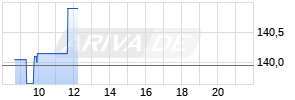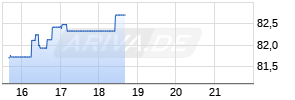
UCB: Osteoporosis Patients Believe Their Condition is Neglected and Deprioritised by Healthcare Authorities
PR Newswire
BRUSSELS, Dec. 12, 2019
- New survey reveals that 65% of women with osteoporosis believe their condition is being neglected1
- 58% said that the impact of osteoporosis/fragility fractures is not fully understood or appreciated by their healthcare authority, with four in five (83%) agreeing that their healthcare authority should be doing more to prioritise it1
- 77% agree that if more people aged under 60 suffered from osteoporosis, it would be more of a priority1
BRUSSELS, Dec. 12, 2019 /PRNewswire/ -- Results from a new UCB survey have revealed the impact osteoporosis has on women, with nearly two thirds (65%) agreeing that their condition is being neglected and that their healthcare authority should be doing more to prioritise it (83%).1
Following the 2018 UCB survey, which revealed a startling lack of knowledge and understanding of osteoporosis and fragility fractures, these new results involving 965 women over 60 years old with osteoporosis, across 11 European countries, showed that over half (58%) agreeing that their healthcare authority doesn't fully understand the impact osteoporosis and fragility fractures has on their lives.1
The survey highlighted that osteoporosis isn't just about broken bones: patients surveyed revealed that the condition causes them pain (83%), makes them feel depressed (57%), vulnerable (61%), and isolated (27%).1 The results also suggest that age may play a part in the perceived neglect of osteoporosis and fragility fractures, with three quarters (77%) of patients agreeing that it would be prioritised if more people under 60 suffered from the condition.1
"This multinational European survey highlights that women with osteoporosis are clearly feeling let down by their healthcare system that are not prioritising services for osteoporosis and fragility fractures. The significant impact that osteoporosis and fragility fractures can have on individual's life cannot be overlooked. We need to work with patients to take their concerns and experiences to policy makers to support the services needed to reduce the burden of osteoporosis." commented Dr Kassim Javaid, Consultant Rheumatologist, University of Oxford. "With so many believing that osteoporosis would be prioritised if it affected younger people, we need to reassure patients that health systems and policy makers can do more to help deliver quality care for patients, regardless of their age."
Osteoporosis is the most common type of bone disease, affecting approximately 200 million people worldwide.2 This number is expected to rise due to the global ageing population, presenting a larger burden to health systems worldwide. By 2050, the global population of older people is projected to more than double its 2015 size, reaching nearly 2.1 billion.3 With osteoporosis mainly affecting women over the age of 50,4 action is needed to ensure that osteoporosis care and management is prioritised by healthcare systems to safeguard against exponential growth of the condition and subsequent patient and societal impact.5
Of the women surveyed, over half said performing their usual daily activities (58%) and walking (56%) have become problematic due to their osteoporosis and nearly a third (30%) said it impacted their ability to take care of themselves.1 But the impact of the condition doesn't stop with the individual: many say their employment has been affected. Almost one in five (17%) admitted to having to reduce their working hours, and 1 in 8 (13%) said the condition meant they had to give up work completely.1
Osteoporosis causes bones to weaken at a faster rate than normal; making them fragile and more likely to break,2 resulting in more than 8.9 million fractures each year.6 Fragility fractures have the potential to impose a significant burden on a person's life, often making everyday activities such as eating, dressing, shopping or driving difficult.7 After experiencing the first fracture, you are five times more likely to suffer another fracture within a year.8 Worse still, for those that suffer a hip fracture, 40% are not able to walk independently again,9 and up to a quarter of those who suffer a hip fracture die in the first year through complications.10,11
When it comes to the diagnosis and management of osteoporosis, nearly three quarters of those surveyed (70%) recall being told that osteoporosis is 'just a normal part of ageing and to be careful', with many adding that information about fragility fractures (56%) or treatment options (33%) was not discussed enough or at all.1 Furthermore, a third of respondents commented that, upon their diagnosis their healthcare professional didn't have enough time (34%) and didn't give them enough information on managing the condition and its impact (34%).1
"The results of the survey are distressing given so many patients are experiencing a great reduction in their overall quality of life, owing to osteoporosis and fragility fractures – it is no wonder patients are feeling neglected," said Dr Pascale Richetta, Head of Bone and Executive Vice President at UCB. "We know that people nowadays expect to be able to do more in their later life; we need to help them achieve this and live their lives to the fullest by better educating all stakeholders that play a role in managing osteoporosis and fragility fractures– policy makers, physicians and patients – to ensure the short and long-term impact of osteoporosis is fully understood, effectively managed, and that the risk of subsequent, iterative, fractures is significantly reduced."
About the survey
UCB, together with Research Partnership, conducted an online survey of 965 women aged 60 and over who had been diagnosed with osteoporosis, from 11 European countries. The survey was conducted in August/September 2019 as part of an initiative to investigate the impact osteoporosis and fragility fracture had on patient lives, their perceptions of the management of their condition and how much they thought their healthcare professional knew about the condition. Survey participants were from UK, France, Spain, Germany, Italy, Poland, Lithuania, Greece, Ireland, Netherlands and Romania.
About UCB
UCB, Brussels, Belgium (www.ucb.com) is a global biopharmaceutical company focused on the discovery and development of innovative medicines and solutions to transform the lives of people living with severe diseases of the immune system or of the central nervous system. With 7,500 people in approximately 40 countries, the company generated revenue of € 4.6 billion in 2018. UCB is listed on Euronext Brussels (symbol: UCB). Follow us on Twitter: @UCB_news.
UCB Forward-Looking Statements
This press release contains forward-looking statements based on current plans, estimates and beliefs of management. All statements, other than statements of historical fact, are statements that could be deemed forward-looking statements, including estimates of revenues, operating margins, capital expenditures, cash, other financial information, expected legal, political, regulatory or clinical results and other such estimates and results. By their nature, such forward-looking statements are not guarantees of future performance and are subject to risks, uncertainties and assumptions which could cause actual results to differ materially from those that may be implied by such forward-looking statements contained in this press release. Important factors that could result in such differences include: changes in general economic, business and competitive conditions, the inability to obtain necessary regulatory approvals or to obtain them on acceptable terms, costs associated with research and development, changes in the prospects for products in the pipeline or under development by UCB, effects of future judicial decisions or governmental investigations, product liability claims, challenges to patent protection for products or product candidates, changes in laws or regulations, exchange rate fluctuations, changes or uncertainties in tax laws or the administration of such laws and hiring and retention of its employees. UCB is providing this information as of the date of this press release and expressly disclaims any duty to update any information contained in this press release, either to confirm the actual results or to report a change in its expectations.
There is no guarantee that new product candidates in the pipeline will progress to product approval or that new indications for existing products will be developed and approved. Products or potential products which are the subject of partnerships, joint ventures or licensing collaborations may be subject to differences between the partners. Also, UCB or others could discover safety, side effects or manufacturing problems with its products after they are marketed.
Moreover, sales may be impacted by international and domestic trends toward managed care and health care cost containment and the reimbursement policies imposed by third-party payers as well as legislation affecting biopharmaceutical pricing and reimbursement.
References
- Data on file. Research Partners. Osteoporosis research for UCB, September 2019.
- Reginster JY, Burlet N. Osteoporosis: A still increasing prevalence. Bone 2006;38(2 Suppl 1):S4–9.
- International Osteoporosis Foundation. IOF Compendium of Osteoporosis – First Edition. Last accessed September 2019.
- WedMD. Osteoporosis: Are You at Risk? Available at https://www.webmd.com/osteoporosis/guide/osteoporosis-risk-factors. Accessed September 2019.
- Cauley JA. Public health impact of osteoporosis. J Gerontol A Biol Sci Med Sci. 2013;68(10):1243–1251. doi:10.1093/gerona/glt093.
- Ström O, Borgström F, Kanis JA, et al. Osteoporosis: burden, health care provision and opportunities in the EU. Arch Osteoporos 2011;6:59–155. doi: 10.1007/s11657-011-0060-1.
- Cooper C. The crippling consequences of fractures and their impact on quality of life. Am J Med 1997;103:12S–17S; discussion 17S–19S.
- van Geel TA, van Helden S, Geusens PP, et al. Clinical subsequent fractures cluster in time after first fractures. Ann Rheum Dis 2009;68:99–102.
- Magaziner J, Simonsick EM, Kashner TM, et al. Predictors of Functional Recovery One Year Following Hospital Discharge for Hip Fracture: A Prospective Study. J Gerontol 1990;45:M101.
- Cooper C, Atkinson EJ, Jacobsen SJ, et al. Population-based study of survival after osteoporotic fractures. Am J Epidemiol 1993;137:1001.
- Leibson CL, Tosteson AN, Gabriel SE, et al. Mortality, disability, and nursing home use for persons with and without hip fracture: a population-based study. J Am Geriatr Soc 2002;50:1644.

Mehr Nachrichten zur UCB Aktie kostenlos abonnieren
(Mit der Bestellung akzeptierst du die Datenschutzhinweise)

Hinweis: ARIVA.DE veröffentlicht in dieser Rubrik Analysen, Kolumnen und Nachrichten aus verschiedenen Quellen. Die ARIVA.DE AG ist nicht verantwortlich für Inhalte, die erkennbar von Dritten in den „News“-Bereich dieser Webseite eingestellt worden sind, und macht sich diese nicht zu Eigen. Diese Inhalte sind insbesondere durch eine entsprechende „von“-Kennzeichnung unterhalb der Artikelüberschrift und/oder durch den Link „Um den vollständigen Artikel zu lesen, klicken Sie bitte hier.“ erkennbar; verantwortlich für diese Inhalte ist allein der genannte Dritte.





